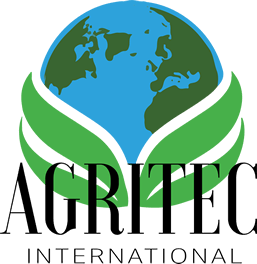One of the main decisions farmers have to make when fertilizing their crops is whether to use foliar
applications or soil applications. The difference between the two is that foliar applications involve
applying fertilizer directly to the leaves of the plant, while soil applications involve applying fertilizer to
the soil.
What are foliar applications?
Foliar application is a method of applying fertilizer directly to the leaves of the plant. This method allows for the fertilizer to be quickly absorbed by the plant, which can quickly correct nutrient deficiencies and reach the plant’s leaves directly. Foliar application can also be used to target specific parts of the plant, such as the fruit or flowers, which can be beneficial for certain crops. However, foliar application is typically more expensive and requires more precise application, as the fertilizer has to be absorbed by the leaves.
What are soil applications?
Soil applications involve applying fertilizer directly to the soil. This method allows the fertilizer to be absorbed by the soil, which then feeds the plants. Soil application is typically more affordable and easier to apply, as it does not require as much precision as foliar application. However, soil applications take longer to take effect and can be affected by soil conditions such as hardpans, pH levels and nutrient deficiencies.
Which application is better?
The choice of application method depends on the specific needs of the crop and the farmer’s preferences. For example, some crops are more tolerant of foliar applications while others are better suited for soil applications. In terms of budget and resources, liquid fertilizers such as liquid calcium are a more affordable and effective alternative to granular fertilizers. Since the liquid fertilizers are already broken down, they can be quickly absorbed by the plant or soil, ensuring that 100% of the fertilizer reaches the plant and none is wasted.
Another important aspect to consider when deciding between foliar and soil application is the timing of the application. Foliar application is more effective when applied at the right stage of growth, while soil application can be applied at any stage of growth but the results will take longer to appear.
In addition, farmers can also use a combination of both foliar and soil application to get the best results. This method is called split application and it is particularly useful for crops that require both quick and long-term nutrient supply.
Furthermore, farmers should also consider environmental factors when deciding between foliar and soil application. Foliar application can be more susceptible to environmental factors such as wind and rain, which can lead to fertilizer loss. On the other hand, soil application is less affected by environmental factors but can be affected by soil conditions such as compaction and erosion.
It is also important to note that liquid fertilizers, such as liquid calcium, offer a more efficient and consistent way of delivering nutrients to the plant. With granular fertilizers, it can be difficult to ensure that the right amount of fertilizer reaches the plant and that it is distributed evenly. This can lead to uneven growth and wasted fertilizer. With liquid fertilizers, farmers can easily control the amount of fertilizer applied and ensure that it reaches the plant in the most efficient way possible.
Foliar application also offers the advantage of being able to apply fertilizer to specific parts of the plant, such as the fruit or flowers. This can be beneficial for certain crops, as it allows farmers to target the areas of the plant that require the most nutrients. However, it is important to keep in mind that foliar application is more expensive and requires more precise application, as the fertilizer has to be absorbed by the leaves.
In terms of crop selection, it is essential to consider the specific needs of the crop you are growing. For example, some crops such as leafy vegetables, fruits and flowers are more tolerant of foliar applications while others such as root crops and grains are better suited for soil applications. Additionally, farmers should also consider the soil conditions of their farm as different soils have different nutrient levels and pH levels. Furthermore, farmers can also take into account the environmental factors when deciding between foliar and soil application. Foliar application can be more susceptible to environmental factors such as wind and rain, which can lead to fertilizer loss. On the other hand, soil application is less affected by environmental factors but can be affected by soil conditions such as compaction and erosion.
Moreover, farmers should also consider the type of fertilizer being used. Liquid fertilizers, such as liquid calcium, are a more efficient and consistent way of delivering nutrients to the plant. They are easy to apply and can be quickly absorbed by the plant or soil. Granular fertilizers, on the other hand, can be difficult to distribute evenly and can take longer to break down and affect the plant.
Another factor to consider is the environmental impact of the fertilizer. Liquid fertilizers are less likely to run off into nearby water sources, which can be beneficial for the environment and avoid any negative impact on aquatic life. They are also less likely to be blown away by wind, which also reduces the chance of fertilizer loss.
Summary
The choice between foliar and soil application of fertilizers depends on the specific needs
of the crop, the farmer’s preferences, and the resources available. Both methods have their own
advantages and disadvantages, and a combination of both can also be used to achieve optimal results.
Liquid fertilizers such as liquid calcium are a more affordable and effective alternative to granular
fertilizers, as they can be quickly absorbed by the plant or soil and ensure that 100% of the fertilizer
reaches the plant. Additionally, farmers should consider the timing of the application, crop selection, soil
conditions, type of fertilizer, and environmental factors when deciding between foliar and soil
application. With careful consideration, farmers can choose the most appropriate method for their
crops and achieve optimal growth and yields.


